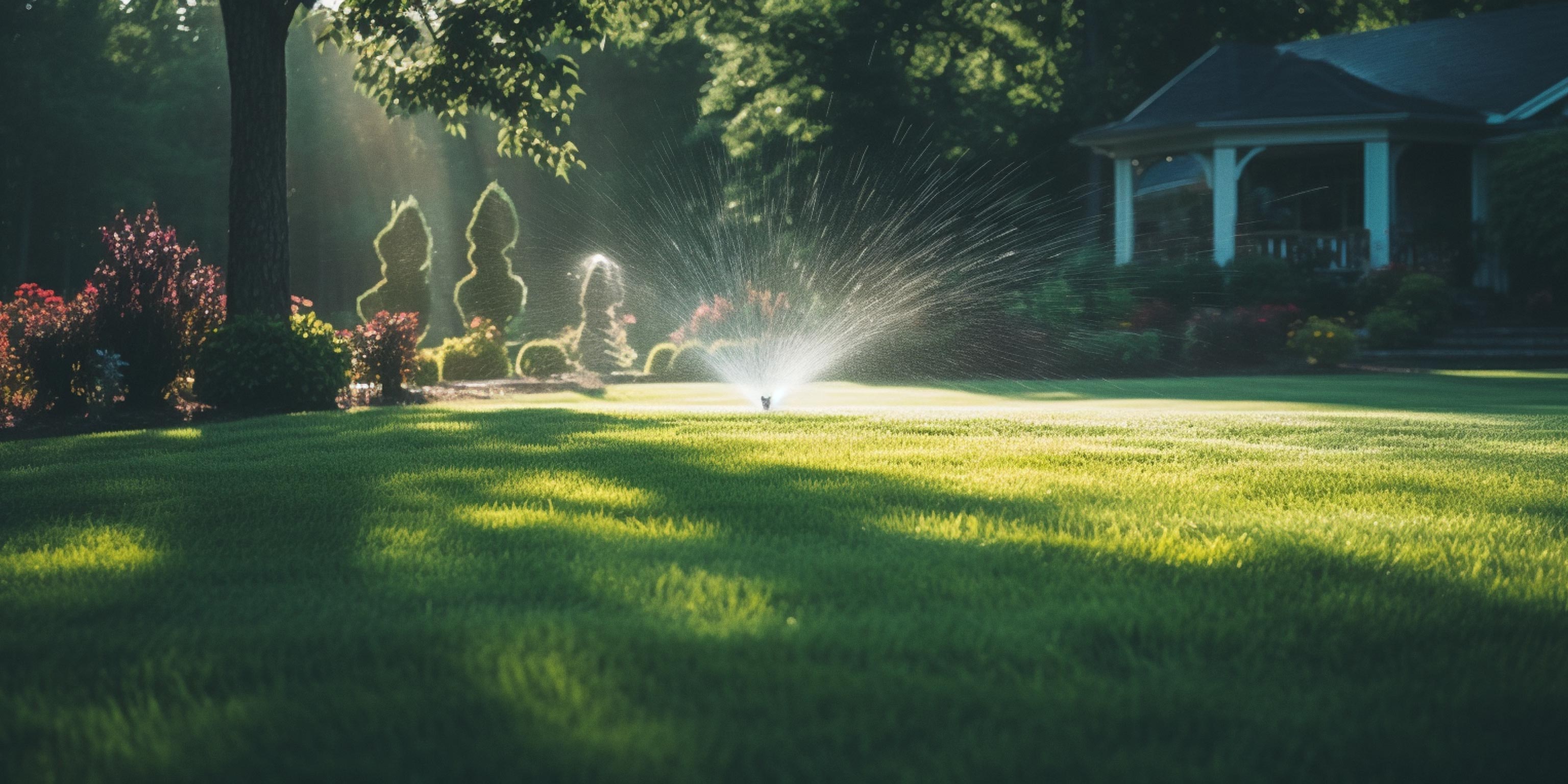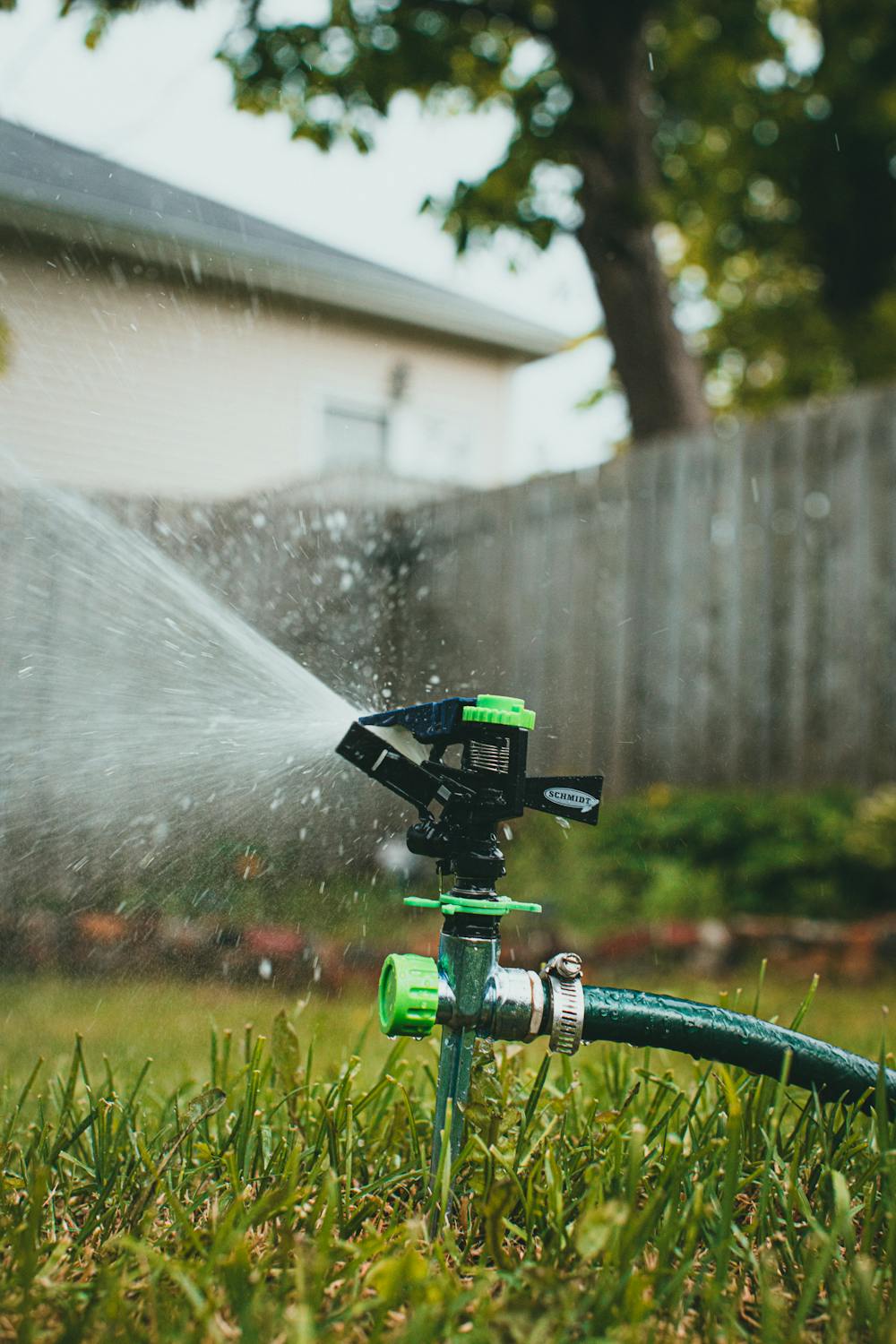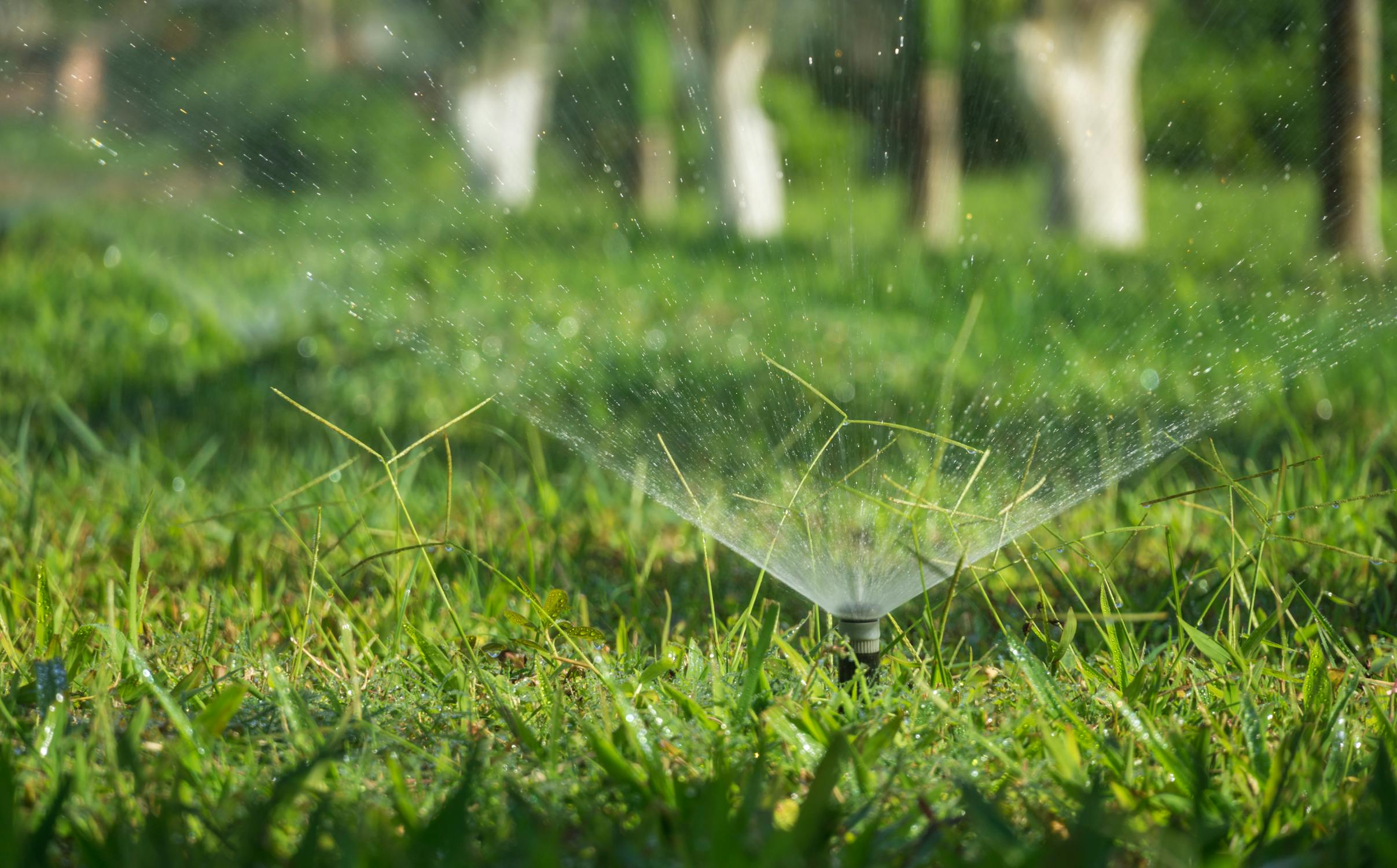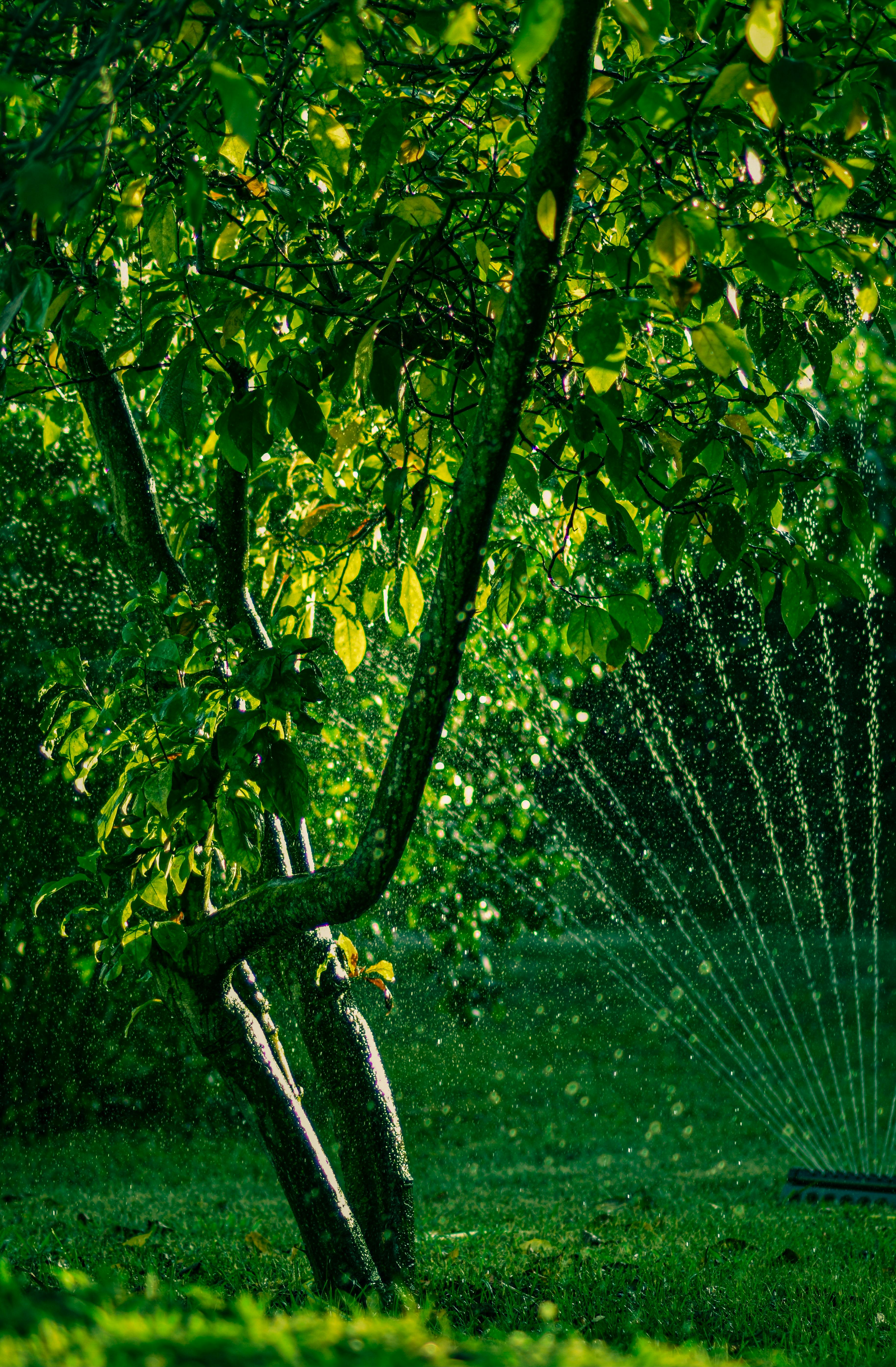
Watering Wisely: Conserving Water in Lawn Care
Published on September 14, 2023 by Harrison Wolfe
Water conservation is a crucial aspect of responsible lawn care. With the increasing strain on our water resources, it is imperative that we optimize our watering practices to minimize water wastage. In this blog post, we will explore effective strategies to help you water your lawn efficiently while still maintaining its health and vibrancy. By implementing these proven techniques, you can make a positive impact on the environment and reduce your water bill without sacrificing the beauty of your lawn. So, let's dive in and discover how you can water wisely for a greener, more sustainable lawn.
Importance of Water Conservation in Lawn Care
Water conservation is a crucial aspect of responsible lawn care. By understanding the scarcity of water and the environmental impact of its usage, we can make informed choices to preserve this precious resource. In this section, we will delve into the significance of water conservation in lawn care, focusing on understanding water scarcity and recognizing the environmental implications of excessive water usage.
Understanding Water Scarcity
Water scarcity refers to the limited availability of freshwater resources, which directly affects both humans and the environment. As the global population continues to grow, the demand for water escalates, putting strain on existing supplies. This scarcity is further exacerbated by factors such as climate change, unsustainable water management practices, and the degradation of water sources.
In the context of lawn care, it is essential to recognize that lawns consume a significant amount of water, particularly in regions with limited water resources. Therefore, the responsible use of water in maintaining our lawns becomes even more critical. By understanding the gravity of water scarcity, we can make conscious efforts to conserve water and minimize its wastage in our outdoor spaces.

Environmental Impact of Water Usage in Lawn Care
The environmental impact of excessive water usage in lawn care is substantial. When we overwater our lawns, a significant amount of water seeps below the surface, carrying with it various chemicals, fertilizers, and pesticides. This runoff can find its way into nearby water bodies, polluting them and negatively impacting aquatic ecosystems.
Moreover, watering our lawns excessively not only wastes water but also contributes to energy consumption. Many households rely on electric or fuel-powered sprinkler systems, which consume significant amounts of energy. By conserving water in lawn care, we can indirectly reduce our carbon footprint and work towards a more sustainable future.
To better understand the environmental implications of excessive water usage, it is crucial to recognize that water is a finite resource. Conserving water in our lawn care practices can help alleviate stress on water supplies, preserve ecosystems, and promote overall environmental health.
In conclusion, water conservation in lawn care plays a pivotal role in sustainable living. Understanding the scarcity of water and the environmental impact of its usage allows us to make informed choices that benefit both our lawns and the planet. By adopting water-saving techniques and efficient irrigation methods, we can create beautiful, thriving lawns while being mindful of preserving this precious resource.
Assessing Water Needs for Your Lawn
A lush and healthy lawn not only enhances the beauty of your home but also contributes to the overall well-being of the environment. When it comes to lawn care, one of the most crucial aspects is watering wisely. By conserving water in your lawn care routine, you not only save money but also play your part in preserving this precious natural resource.
Factors Affecting Water Requirements
Before delving into the methods of calculating the right amount of water for your lawn, it's important to understand the various factors that affect its water requirements. By taking these factors into consideration, you can ensure that your lawn receives the appropriate amount of water it needs to thrive.
Climate: Different climatic conditions influence the amount of water your lawn needs. For instance, regions with high temperatures and low rainfall require more frequent watering compared to areas with cooler climates and consistent rainfall.
Grass Type: The type of grass in your lawn also plays a significant role in determining water requirements. Some grass species, such as Bermuda grass, have high drought tolerance and require less water, while others, like Kentucky bluegrass, need more frequent watering.
Soil Type: The soil composition affects the water-holding capacity and drainage of your lawn. Sandy soils drain water more quickly, requiring more frequent watering, whereas clay soils retain water for longer durations, necessitating less frequent irrigation.
Sun Exposure: The amount of sunlight your lawn receives also affects its water needs. Lawns exposed to full sunlight may require more water due to increased evaporation, while shaded areas may require less.
Calculating the Right Amount of Water
Once you've considered the factors influencing your lawn's water requirements, it's time to calculate the right amount of water to ensure effective irrigation. By following these steps, you can determine the appropriate watering schedule for your lawn:
Determine the grass root depth: Measure the average root depth of your grass. This can vary depending on the grass type and the age of your lawn. Typically, most lawns have roots that extend up to 6 inches.
Perform a soil moisture test: Use a soil moisture meter or simply insert a screwdriver into the soil to determine how deep the moisture penetrates. Ideally, the moisture should reach the root zone.
Measure the water output: Place containers such as empty tuna cans or rain gauges in various locations throughout your lawn. Run your irrigation system for a set period and measure the water collected in each container.
Calculate the water application rate: Divide the total amount of water collected in the containers by the area covered by the containers. This will give you the water application rate in inches per hour.
Determine the irrigation duration: Divide the grass root depth by the water application rate. The result will give you the duration for which you should run your irrigation system to deliver the right amount of water.
By following these steps and adjusting based on weather conditions and the health of your lawn, you can effectively calculate and provide your lawn with the optimal amount of water it needs for proper growth and vitality.
Remember, the goal is to water your lawn deeply but infrequently to encourage deep root growth and reduce water wastage. By assessing the water needs of your lawn and taking a proactive approach to watering, you can contribute to water conservation while maintaining a vibrant and healthy lawn.

Efficient Watering Techniques
Efficient watering techniques are crucial for conserving water in lawn care. By implementing proper irrigation systems, controlling the timing and frequency of watering, and minimizing water waste, you can maintain a healthy lawn while also being environmentally conscious.
Utilizing Proper Irrigation Systems
Choosing the right irrigation system can significantly impact water conservation efforts. Consider utilizing the following irrigation methods:
- Drip Irrigation: This system delivers water directly to the base of plants, minimizing evaporation and runoff. It is particularly effective for watering flower beds, shrubs, and trees.
- Sprinkler Systems: Opt for sprinklers with adjustable heads to ensure water is distributed evenly. Avoid watering sidewalks or driveways to prevent wasteful runoff.
- Smart Irrigation Technology: Embrace technological advancements by installing smart irrigation systems. These systems use weather data and soil moisture sensors to adjust watering schedules automatically, ensuring water is only used when necessary.
Timing and Frequency of Watering
Knowing when and how often to water your lawn is crucial for efficient water usage. Keep these factors in mind:
- Early Morning Watering: Watering in the early morning allows the grass to absorb moisture before the heat of the day causes evaporation. This also minimizes the risk of fungal diseases.
- Watering Based on Soil Moisture: Instead of watering on a fixed schedule, monitor soil moisture levels. Stick a screwdriver or a soil moisture meter into the ground to determine if watering is necessary. If the soil feels moist, hold off on watering.
- Deep Infrequent Watering: Rather than frequent shallow watering, encourage deep root growth by watering deeply and infrequently. This helps the grass develop stronger roots and reduces water loss through evaporation.
Avoiding Water Waste
To further conserve water in lawn care, implement the following practices to avoid unnecessary water waste:
- Inspect and Repair Irrigation Systems: Regularly check for leaks, clogs, or misaligned sprinkler heads. Repair any issues promptly to prevent water wastage.
- Mulching: Apply a layer of organic mulch around plants and trees to retain moisture in the soil. This reduces the need for excessive watering.
- Proper Maintenance: Maintain your lawn by mowing at the correct height and aerating as needed. Well-maintained lawns require less water to thrive.
By utilizing proper irrigation systems, controlling the timing and frequency of watering, and avoiding water waste, you can contribute to water conservation efforts while keeping your lawn healthy and vibrant. Implement these efficient watering techniques to make a positive impact on both the environment and your water bill.
Implementing Water-Saving Practices
Conserving water in lawn care is not only beneficial for the environment but also for your wallet. By implementing water-saving practices, you can maintain a healthy lawn while reducing water consumption. In this section, we will explore three effective strategies: mulching to retain moisture, selecting drought-tolerant grass varieties, and proper lawn maintenance for water conservation.
Mulching to Retain Moisture
Mulching is a simple yet highly impactful technique that helps retain moisture in your lawn, reducing the need for frequent watering. By applying a layer of organic mulch, such as wood chips or grass clippings, around your plants and grass, you create a barrier that minimizes evaporation and keeps the soil cool.
This protective layer of mulch not only conserves water but also suppresses weed growth, improves soil structure, and adds nutrients to the soil as it breaks down over time. Additionally, mulching can enhance the overall appearance of your lawn, giving it a well-maintained and aesthetically pleasing look.
Selecting Drought-Tolerant Grass Varieties
Choosing the right grass variety for your lawn is crucial when aiming for water conservation. Opting for drought-tolerant grass varieties that require less water will significantly reduce your overall water usage. These grasses are specifically bred to withstand drought conditions and can thrive even with limited irrigation.
Examples of popular drought-tolerant grass varieties include Bermuda grass, Zoysia grass, and Buffalo grass. These grasses have deep root systems, allowing them to access water from deeper soil layers. Additionally, they have natural adaptations that enable them to withstand heat and drought stress better than traditional grass varieties.
By selecting drought-tolerant grass varieties, you can maintain a green and healthy lawn while minimizing water consumption.

Proper Lawn Maintenance for Water Conservation
Proper lawn maintenance practices play a crucial role in conserving water in lawn care. By following these tips, you can ensure that your lawn stays healthy and vibrant while saving water:
- Mow at the right height: Set your lawn mower to the recommended height for your grass variety. Longer grass shades the soil, reducing evaporation and promoting deeper root growth.
- Water deeply and infrequently: Instead of frequent light watering, apply a deep watering session less often. This encourages the grass roots to grow deeper in search of water, making them more resilient to drought conditions.
- Monitor soil moisture: Use a moisture meter or simply push a screwdriver into the soil to check for moisture levels. Water your lawn only when it needs it, avoiding overwatering.
- Fix leaks and irrigation issues: Regularly inspect your irrigation system for leaks, malfunctioning sprinklers, or other issues. Addressing these problems promptly ensures efficient water usage.
By implementing these proper lawn maintenance practices, you can optimize water usage and contribute to water conservation efforts.
Remember, water-saving practices not only benefit the environment but also help you reduce your water bills. By mulching to retain moisture, selecting drought-tolerant grass varieties, and practicing proper lawn maintenance, you can achieve a lush and healthy lawn while being mindful of water conservation.
Additional Tips for Water Conservation
Conserving water in lawn care is not only beneficial for the environment, but it can also save you money on your water bill. In addition to the essential tips we've already discussed, there are a few more strategies you can incorporate into your watering routine to further promote water conservation. Let's explore these additional tips in detail:
Collecting and Reusing Rainwater
One effective way to conserve water is by collecting and reusing rainwater. Installing a rain barrel or rainwater harvesting system allows you to capture rainfall and use it to irrigate your lawn. This can significantly reduce your reliance on potable water for watering plants.
To collect rainwater efficiently, place your rain barrel beneath a downspout or gutter that collects the water from your roof. Make sure the barrel has a tight-fitting lid to prevent debris and mosquitoes from getting in. When you need to water your lawn, simply use a watering can or connect a hose to the barrel and let gravity do the work.
Adjusting Watering Practices Based on Weather Conditions
Adapting your watering practices according to weather conditions is another smart way to conserve water. Instead of sticking to a fixed watering schedule, pay attention to the weather forecast and adjust accordingly.
During periods of rainfall, you can skip a watering session altogether. If there's a chance of rain in the next few days, hold off on watering until it's necessary. On the other hand, during hot and dry spells, you may need to water more frequently to ensure your lawn stays healthy. By being mindful of the weather, you can avoid overwatering and minimize water wastage.
Monitoring and Adjusting Irrigation Systems
Proper maintenance and periodic checks of your irrigation system are essential for water conservation. Over time, sprinkler heads may become misaligned, leading to water being wasted on non-target areas such as sidewalks or driveways. Regularly inspect your irrigation system to ensure it is functioning optimally.
Consider investing in a smart irrigation controller, which uses weather data and sensors to automatically adjust your watering schedule. These controllers can detect rain and soil moisture levels, optimizing watering times and reducing water usage. By utilizing technology to monitor and adjust your irrigation system, you can achieve more precise and efficient water distribution.
By implementing these additional tips for water conservation in your lawn care routine, you can enhance your efforts to minimize water usage and promote a healthier environment. Be proactive in collecting rainwater, adapt your watering practices to weather conditions, and keep a close eye on your irrigation system. Doing so will not only benefit your lawn but also contribute to a more sustainable future.
Conclusion
In conclusion, implementing smart watering practices is crucial for conserving water in lawn care. By following these simple tips, homeowners can significantly reduce water waste and promote a healthier, more sustainable environment. Remember to adjust your watering schedule based on weather conditions, choose the right irrigation method, and regularly inspect and maintain your sprinkler system. Additionally, optimizing soil health, using mulch, and selecting drought-tolerant grass varieties can further enhance water efficiency in your lawn. By being mindful of our water usage and making informed decisions, we can all play a part in preserving this precious resource for future generations.